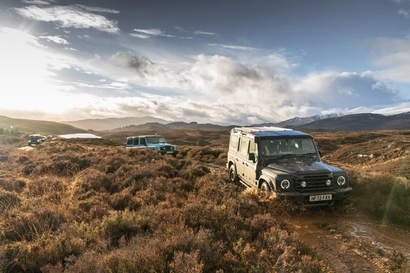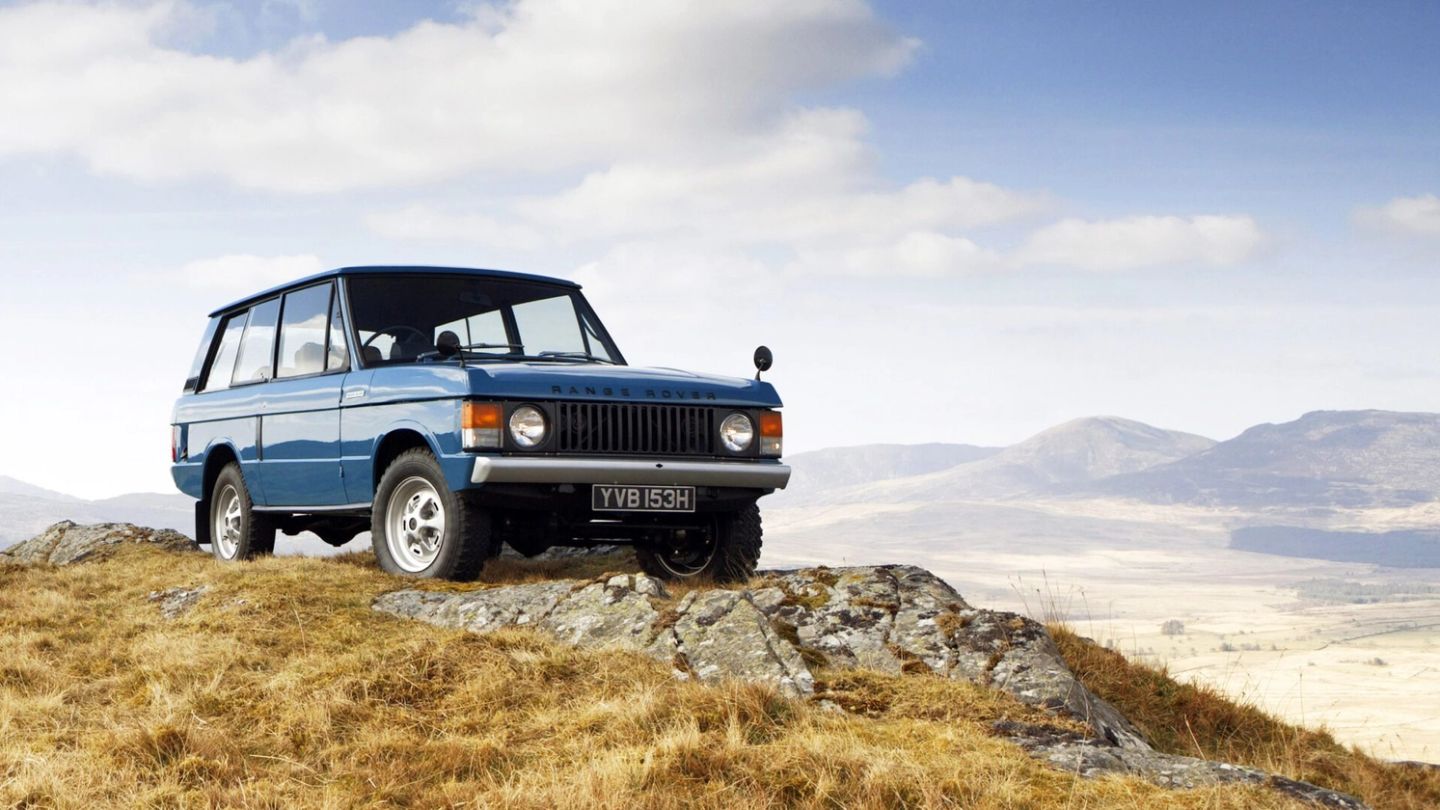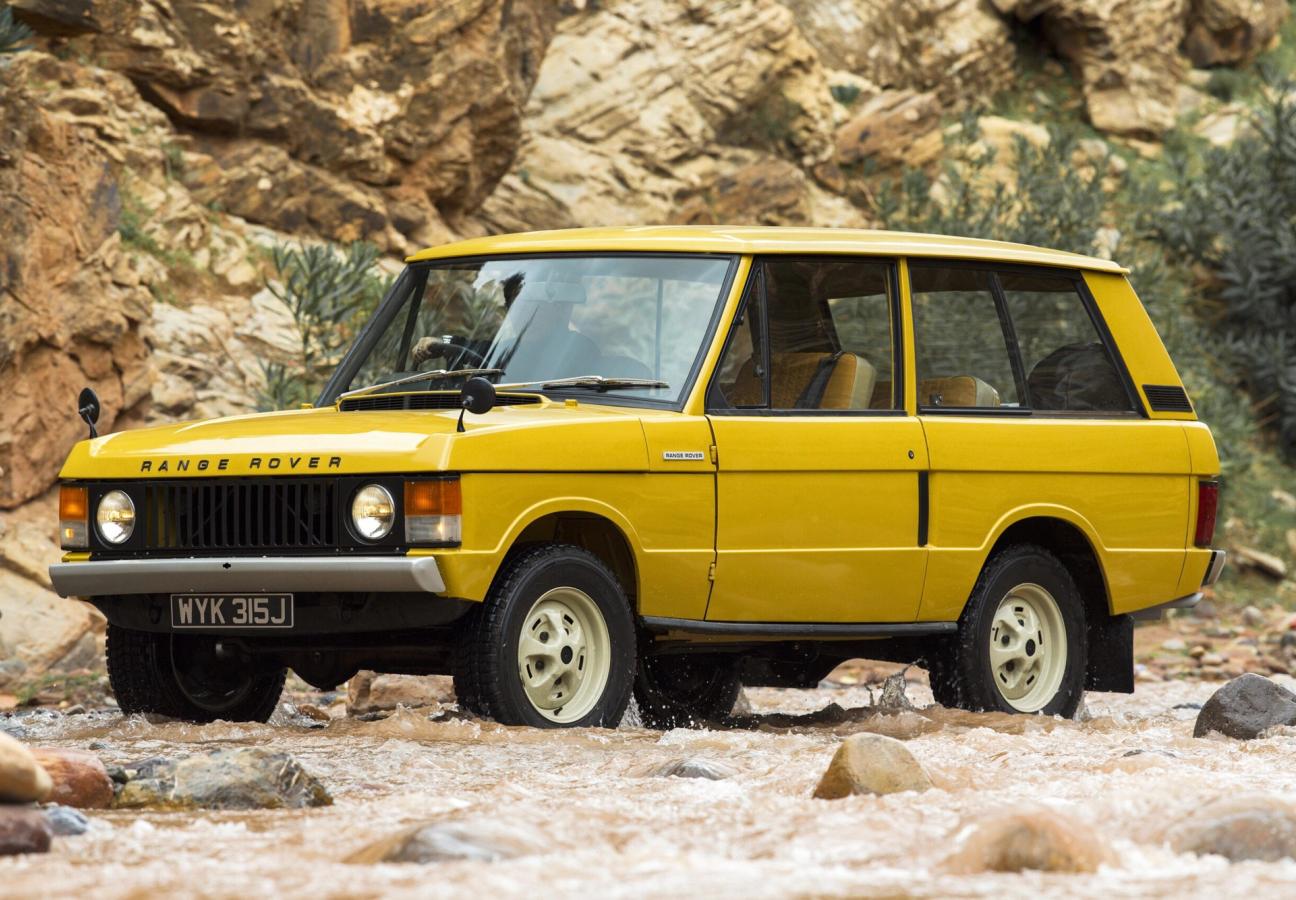

Words: Jonathan Wells
It’s ironic, really. Today, you’ll rarely spot a Range Rover Classic (or any Range Rover, come to think of it) spattered in mud or barreling, terrain-be-damned, over field and fell.
Instead, you’re more likely to see them rolling around serene suburbia. The grubbiest most of them get is when packed lunches explode during the school run — and the trickiest ground they’re likely to cover is your gravel driveway in Chiswick. But why’s all this ironic? Because, when this British automotive icon was first fired up just over 50 years ago, it didn’t half have a bumpy ride first getting onto the road.
You know the story — for the most part. In 1948, Land Rover launched the Series 1; a cheap, cheerful and mechanically simple 4X4 with little concessions to comfort. A decade later, in the 1950s, it attempted to develop a slightly softer take on the design with the ‘Road Rover’. It didn’t work out. So, by the time the 1960s reared its swinging head — and the Ford Bronco and Jeep Wagoneer were cornering the SUV market across the pond — things were getting serious. A solution had to be found.
Thankfully, the president of US operations for Land Rover had some initiative. He took one of the brand’s basic Series II models, retrofitted it with a fierce all-aluminium Buick V8 engine, and shipped it to Britain; in what you could call a nudge in the right direction. But it was a nudge that worked — because it shifted Charles Spencer King, Land Rover’s chief engineer of new vehicle projects, into gear.
Charles Spencer King (for those of you unfamiliar with his iconic work) spent many years working for Triumph, Rolls-Royce and Rover — advising and overseeing development on some of the brands’ most enduring designs. And it was he who spearheaded the Range Rover project.
Many factors contributed to the first prototype. The engine? Adapted from that Buick V8. The suspension? Inspired by the Ford Bronco’s. And the permanent four-wheel drive transmission? Suggested by King after he spent weeks having to drive across rough scrubland to work every day (part of the Solihull factory site was being redeveloped at the time). Even the prototype’s styling, a task usually given to the famed David Bache’s in-house design team, was mostly cooked up by the engineers themselves. And they did one hell of a job.

For, in June 1970, the Range Rover finally rolled off the production line and into the public eye. It had, thankfully, dropped its original name, the ‘100-inch Station Wagon’, and even moved past the prototype and pre-production nameplate of ‘Velar’ (of course, that was a name we’d see once more 47 years later).
But this first true Range Rover, after year upon year of development and redevelopment, had eventually arrived. And it was critically acclaimed. The beautiful boxy thing had a top speed of 100 mph; unheard of for such a bulky vehicle. It had a towing capacity of over three tons: enough room to comfortably carry five passengers and hydraulic disk brakes on all four of its four-wheel wheels. Because that was the big draw; that groundbreaking, pioneering four-speed, dual-range, permanent four-wheel drive system.
But the Range Rover’s achievements didn’t start and end with the spec sheet. Over the 27 years the Classic was officially in production, it worked up quite the resumé. In a masterstroke of advertising patter, it was launched as ‘A Car For All Reasons’ — and it certainly lived up to the hype. In 1979, French rally driver Alain Génestier won the first ever Paris-Dakar Rally in a Range Rover Classic, and his fellow countryman René Metge repeated the feat just two years later.
A road-standard Range Rover successfully drove the three-month, 18,000-mile Trans-American Expedition in 1971; Pope John Paul II’s two popemobiles used on his 1982 visit to Britain were Range Rovers; and a six-wheeled variant was even employed as a rapid response vehicle for the Royal Air Force and Royal Navy.
But perhaps the most unexpected accolade came from the Musée du Louvre in Paris, when the Range Rover became the first ever car to be exhibited in the famed art gallery — heralded as an “exemplary work of industrial design”.
It’s a description Gerry McGovern OBE — current car designer, design director for Jaguar Land Rovers Land Rover marque and a member of the Jaguar Land Rover Board of Management – would agree with wholeheartedly.
“It was unlike anything else in 1970,” McGovern tells Gentleman’s Journal. “The Classic was very architectural with a sense of formality, and the models that followed it have been at the forefront of design and engineering innovation ever since.
“There have been many design features which have contributed to Range Rover’s unique aesthetic,” McGovern adds. “I’d start with the 50/50 glass-to-body relationship, born out of functionality and offering a seemingly endless view out on the world. Secondly, the split tailgate has always been a hallmark of Range Rover — allowing ease of loading but also a viewing platform for events and seating for picnics.
“And, finally, that floating roof — which evolved as a consequence of the rear pillar being covered in black vinyl. They couldn’t achieve the finish they needed at the time, so the floating pillar was created by default. And Range Rover came to define a whole new segment: the luxury SUV”.
Range Rover also has a strong link to the Royal Family. Even before the luxury nameplate rolled onto the scene, the British monarchy had a penchant for Land Rovers — the brand was granted a Royal Warrant by King George VI in 1951.
Indeed, as soon as the Range Rover launched, the Royal Family acquired a handful of the three-door models, and the Queen even took a white model on a state visit to Zambia in 1970 — mere months after the car had launched. Three years ago, an olive green model that features a large sunroof and was delivered to Windsor Castle on August 13, 1975, sold at auction for $130,000.
“We have always provided a Royal review vehicle for Her Majesty the Queen,” adds Gerry McGovern, when speaking of his time as design director at Land Rover, “going all the way back to the Classic. [Four] years ago, we designed and engineered a bespoke current Range Rover, converting it into the Royal review vehicle. I oversaw its construction, and had the honour of handing it over to Her Majesty at Windsor Castle. We spent 20 minutes having a very relaxed conversation, and I was very impressed by Her Majesty’s knowledge and keen interest in Range Rover.”
We shouldn’t be surprised that the Queen is a fan of the brand. Who isn’t? The Range Rover Classic, especially, has the sort of boxy charm and angular attractiveness that’ll keep it in car enthusiasts’ good books forever. You can see that from the money that passes hands between buyers — especially for immaculate early models.
So admit it, you really want a Range Rover Classic. And that’s okay. We all do. Because, as McGovern so succinctly puts it, “It stands alone. There’s simply nothing else like it.”
Already familiar with the Range Rover? Well, these are the 5 best supercar brands you’ve never heard of…
Become a Gentleman’s Journal member. Find out more here.


